Last week we saw the start of the 2022 Winter Olympics in Beijing. While athletes are competing, breaking records, delivering tales of gold glory and tear-jerking stories of loss, let us enjoy the beauty of the arenas and stadiums that host events during these two weeks of sports celebration.
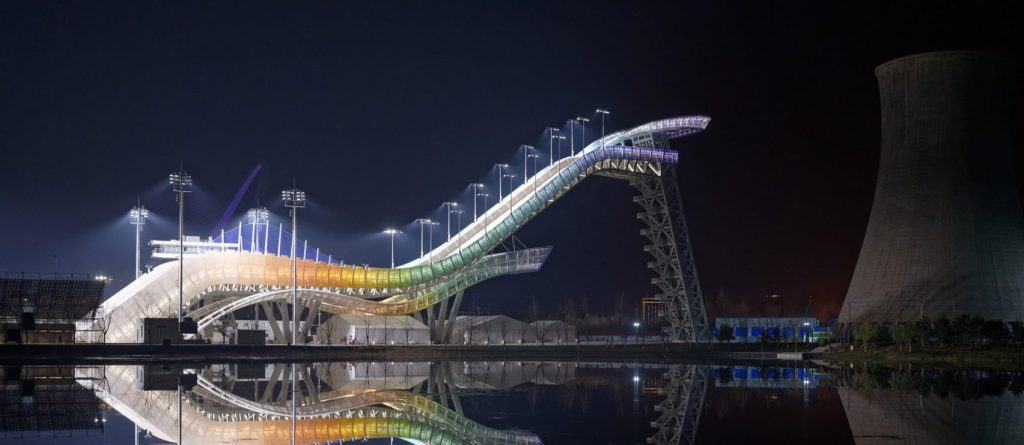
Created as the first permanent venue for big air events in the world, a ski jump built by Chinese studio TeamMinus sits within the former Shougang Industrial Park comprises an impressive 60-metre-high steel structure with three distinct sections.

The Big Air Shougang venue by TeamMinus (also header image)
The distinctive form of the big air venue is supported on a column that contains an elevator for the athletes to reach the top. The ski jump has a long slope, followed by a flatter central section where the takeoff ramp is located, and finally a shorter sloped landing area. At the base of the jump, there are concrete stands with 2,500 permanent seats. The capacity for the Olympics was raised with additional steel stands.
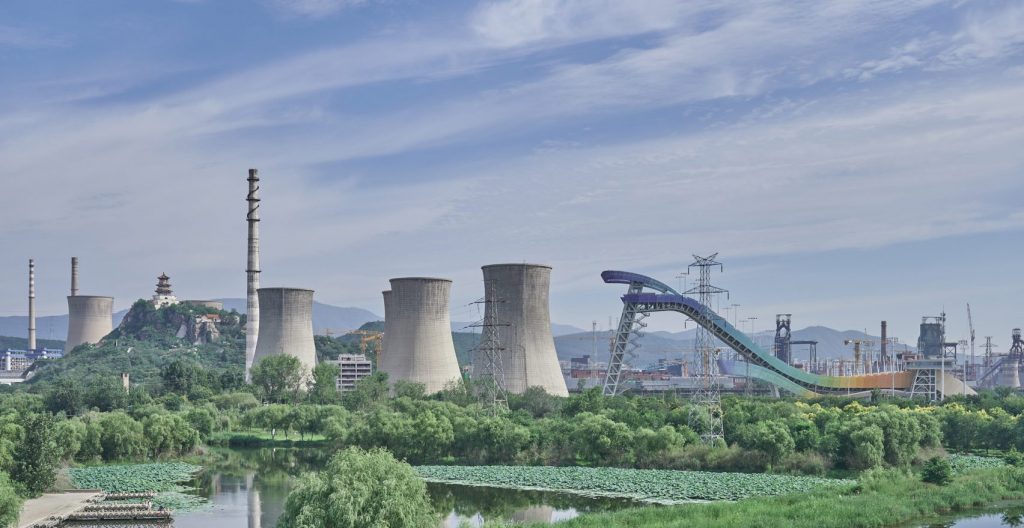
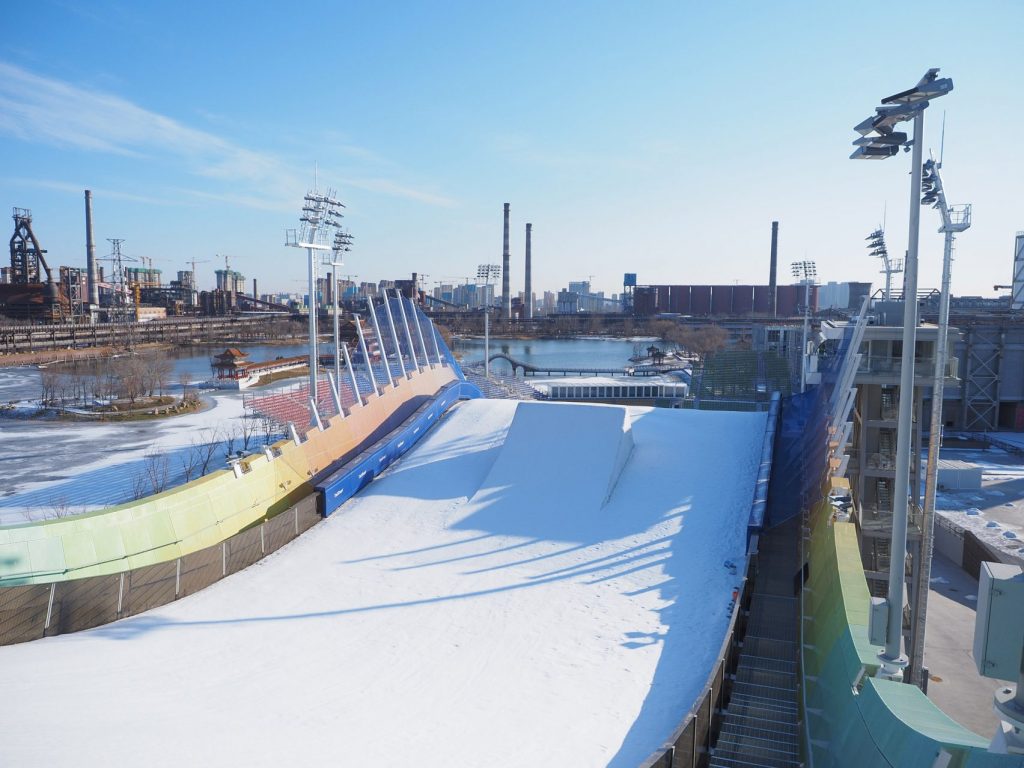
The Big Air Shougang venue by TeamMinus
The dramatic location alongside four large cooling towers on a strip of land between a former cooling lake and the Yongding Rive used to be the home for the largest steel mill in the region before it closed in 2011. Several other buildings of the industrial park were also renovated for the Olympics. The Oxygen Factory complex is used as the entrance building for spectators watching the events, while the Beijing 2022 Organising Committee moved its headquarters into a converted iron ore storage towers on the site in 2017.
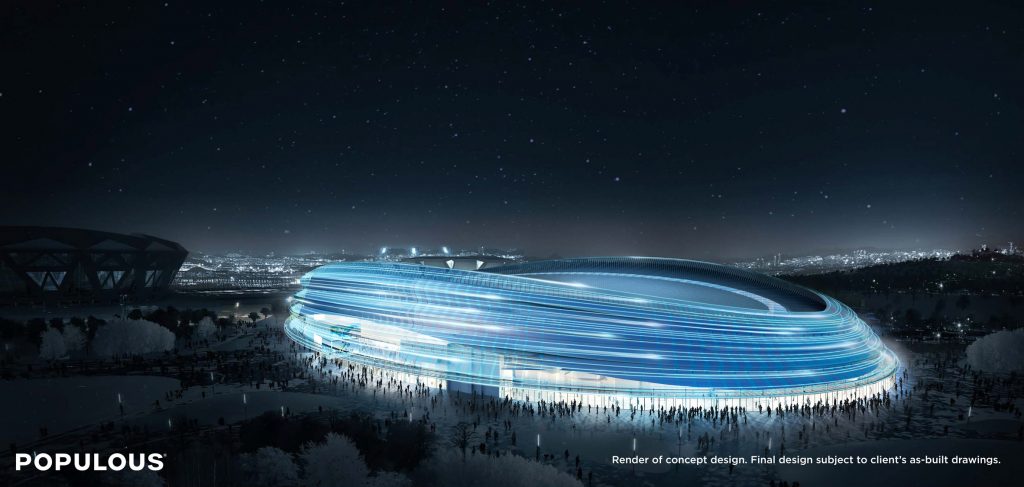
Ice Ribbon by Populous
The only new building created specially for the Beijing 2022 Winter Olympics is the National Speed Skating Oval developed by the international architecture firm Populous. Unofficially named the Ice Ribbon, the 12,000-seat arena for speed skating events is defined by an iconic façade formed of 22 giant, illuminated strands that flow around the oval-shaped stadium to create the impression of fast motion. They can be programmed with dynamic lighting, which will bring the facade to life at night.
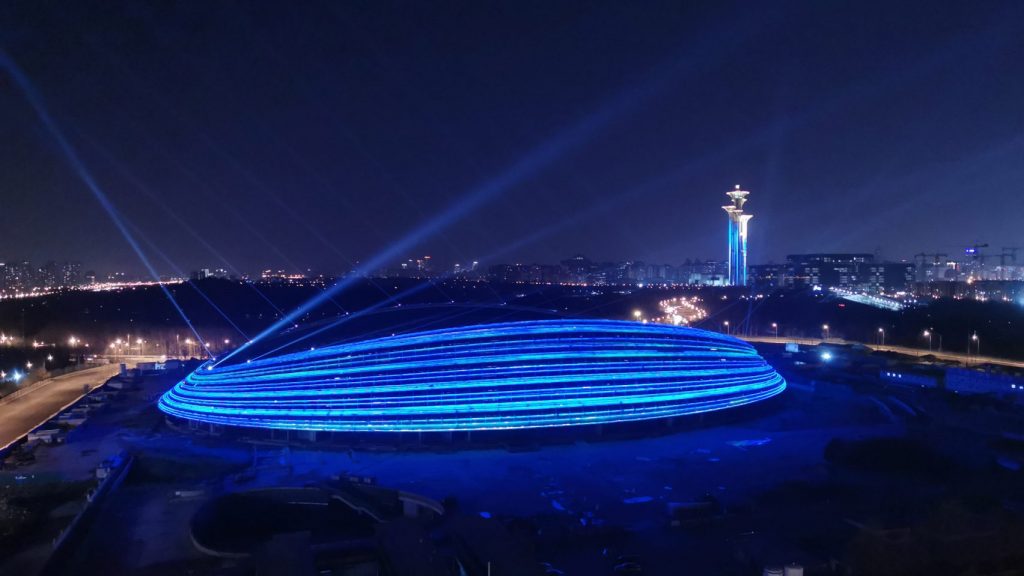
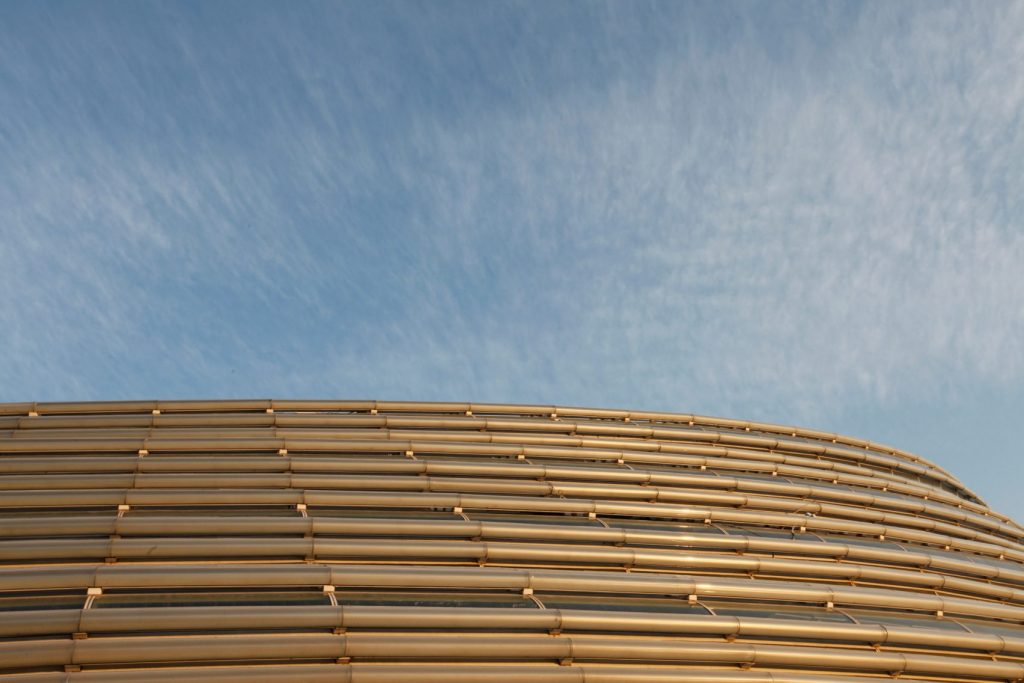
Ice Ribbon by Populous
The team has used state-of-the-art technology features to optimize the overall performance of the building. For instance, the venue is one of the first in the world to utilize a carbon dioxide transcritical direct cooling system that makes it possible to achieve a temperature difference of less 0.5 degrees Celsius across the ice surface. This results in a faster and stronger track.

Ice Ribbon by Populous
Seating and acoustics have also been carefully designed, to ensure the movement and sound of the speed skating blades can be seen and heard from every seat.
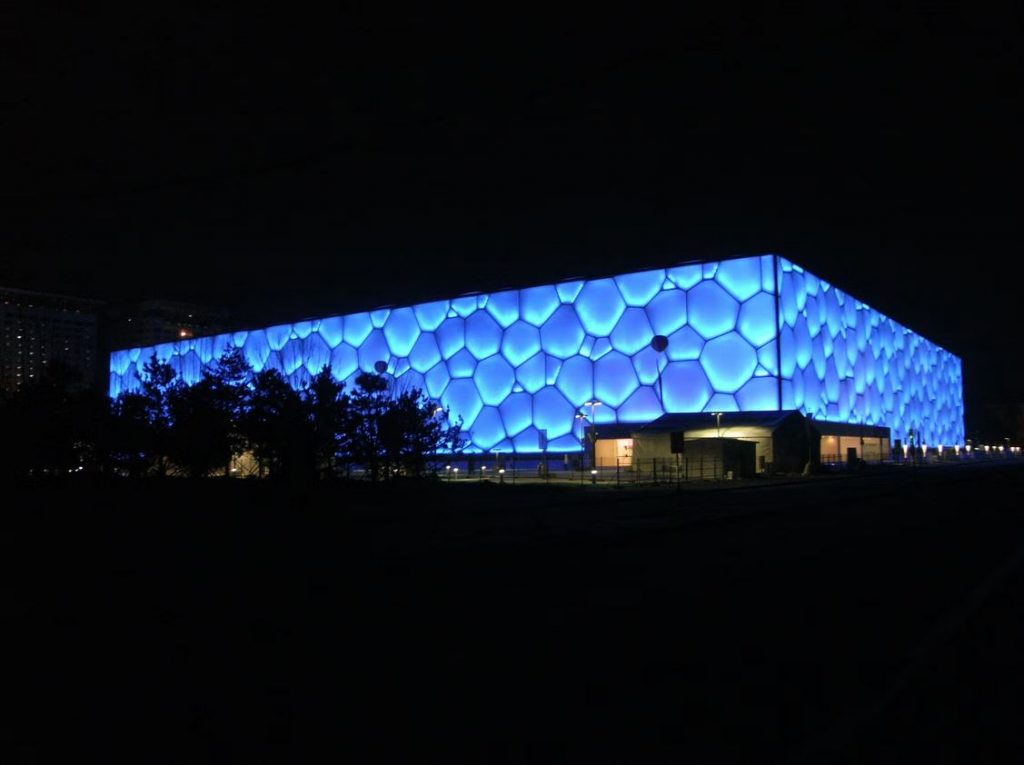
Watercube by PTW
Since Beijing is the first city in history to host both the winter and summer games, the organizers took advantage of this and reused many venues built for the Beijing 2008 Summer Olympics. One of such arenas is the striking National Swimming Centre, or Watercube, conceived by the Australian architecture practice PTW. In addition to being an aquatic centre, the venue provides multi-function leisure and fitness facilities.
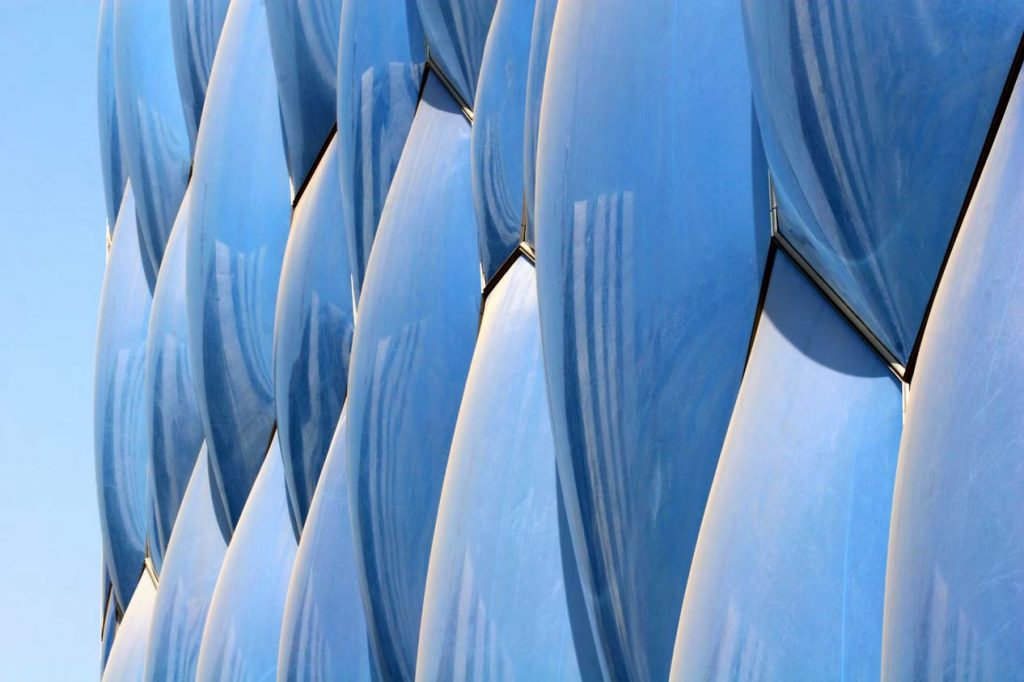
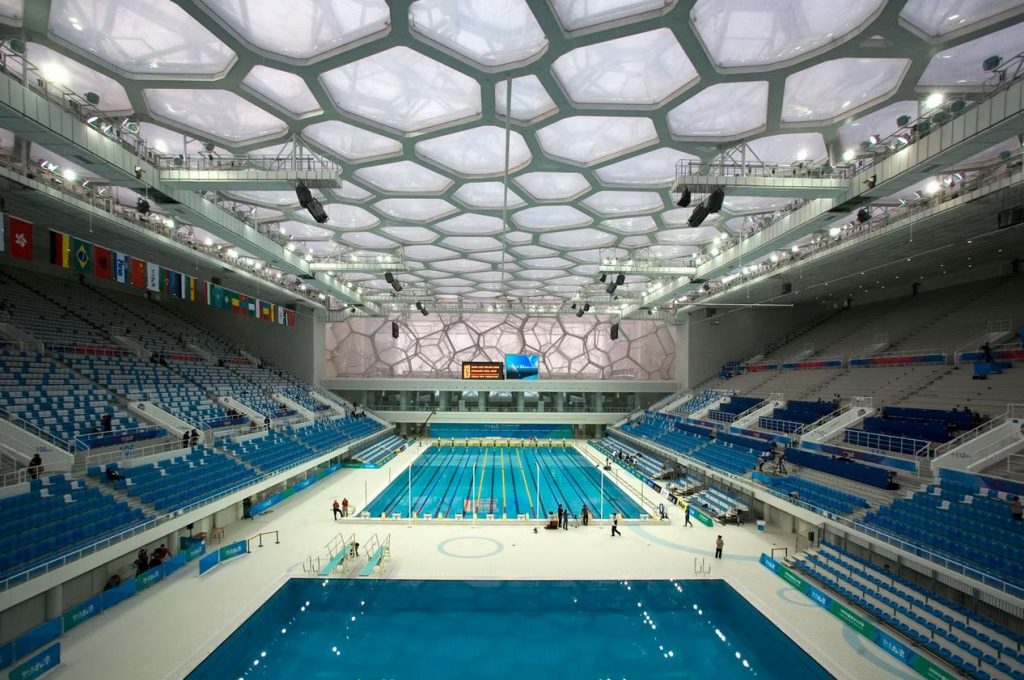
Watercube by PTW
The exterior of the building is made up of a transparent dual-ETFE cushion envelope (ethylene-tetrafluoroethylene) imitating the natural structure of soap bubbles. The solution is as energy efficient and ecologically friendly as it is visually impressive. The envelope is so well insulated that the design may create an annual net heat gain, reducing the energy consumption of the leisure pool hall by 30 per cent. It has three modes of operation, allowing the building to adjust to winter, summer and mid-season conditions.
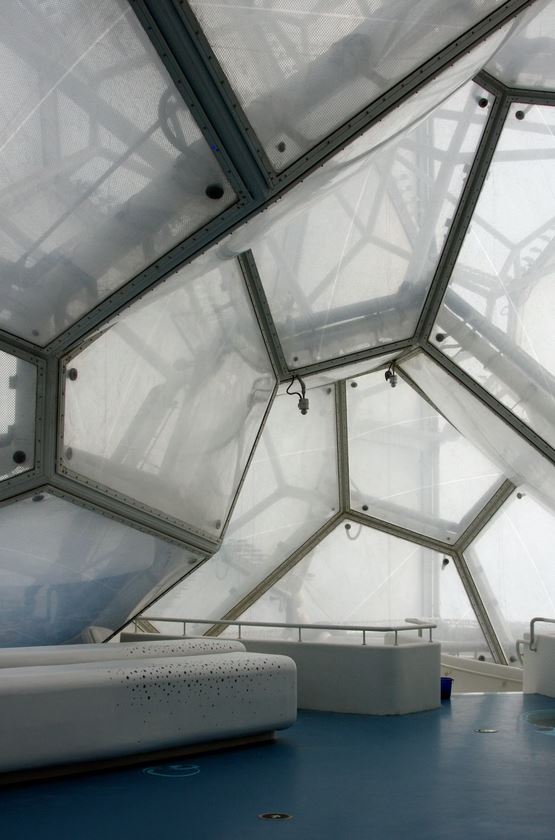

Watercube by PTW
Besides, the Watercube captures the swimming pool water for reuse and collects rainfall in underground tanks for it to be used as a back-up water supply. All this sets standards for a new generation of globally sustainable buildings on a world stage.